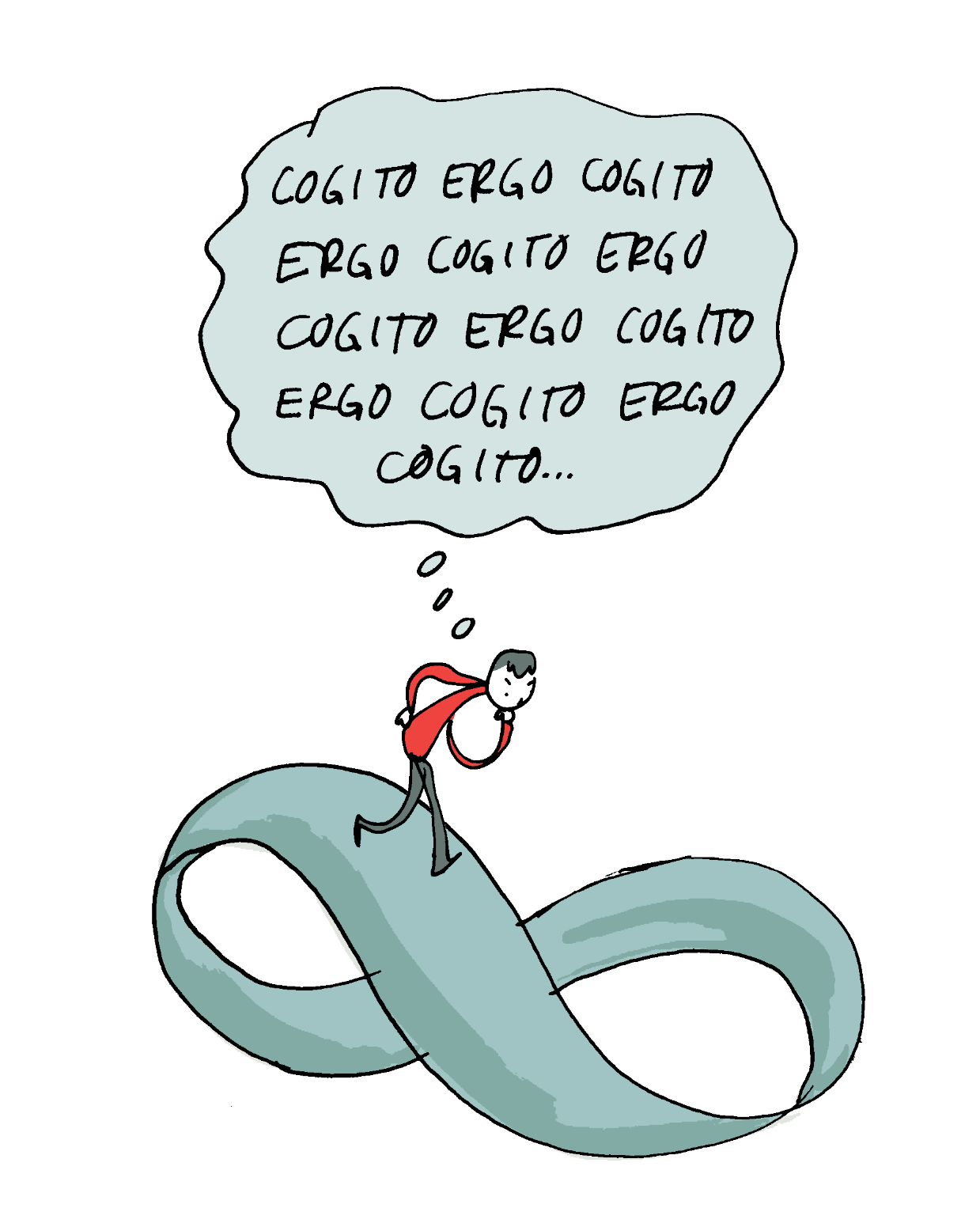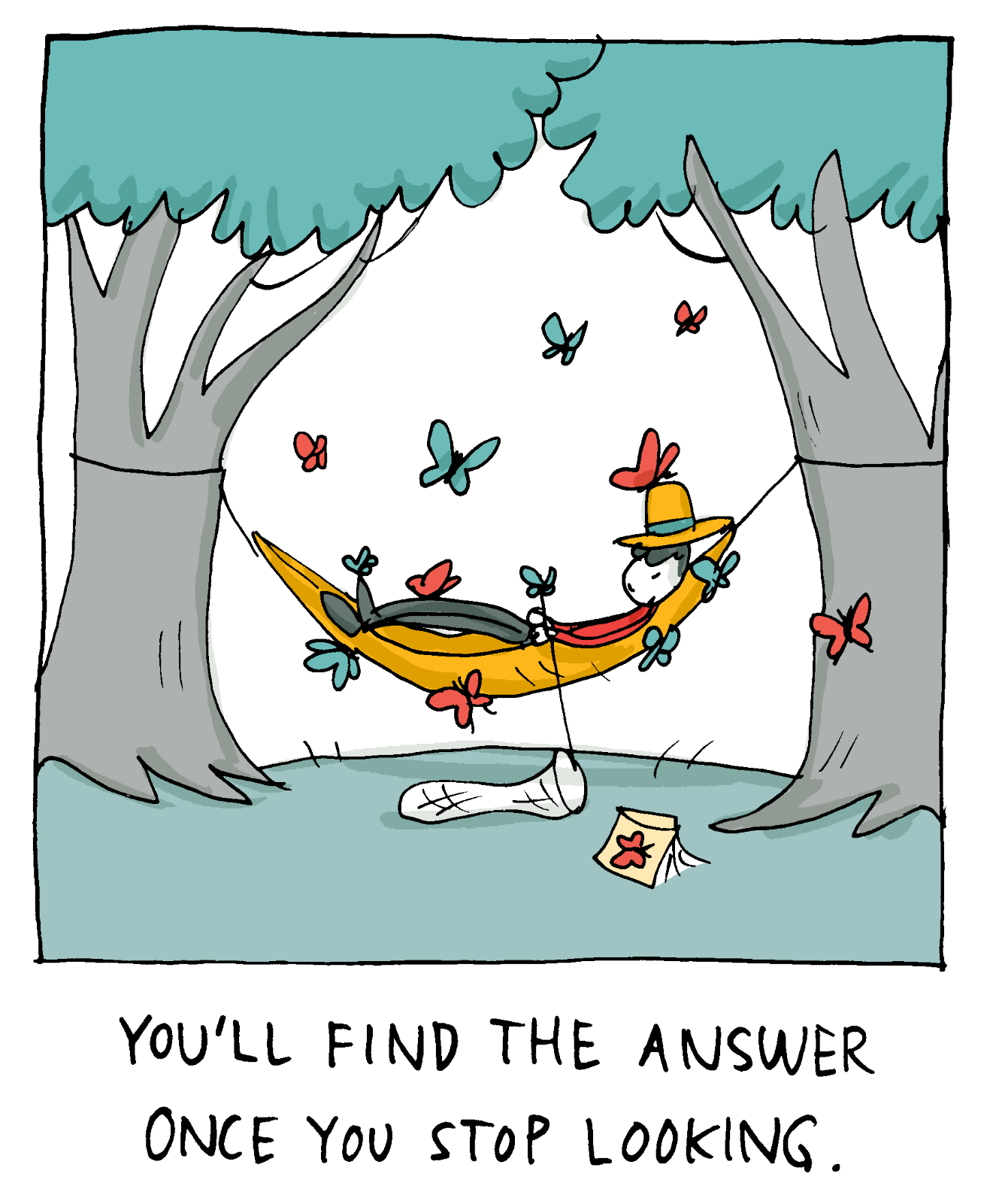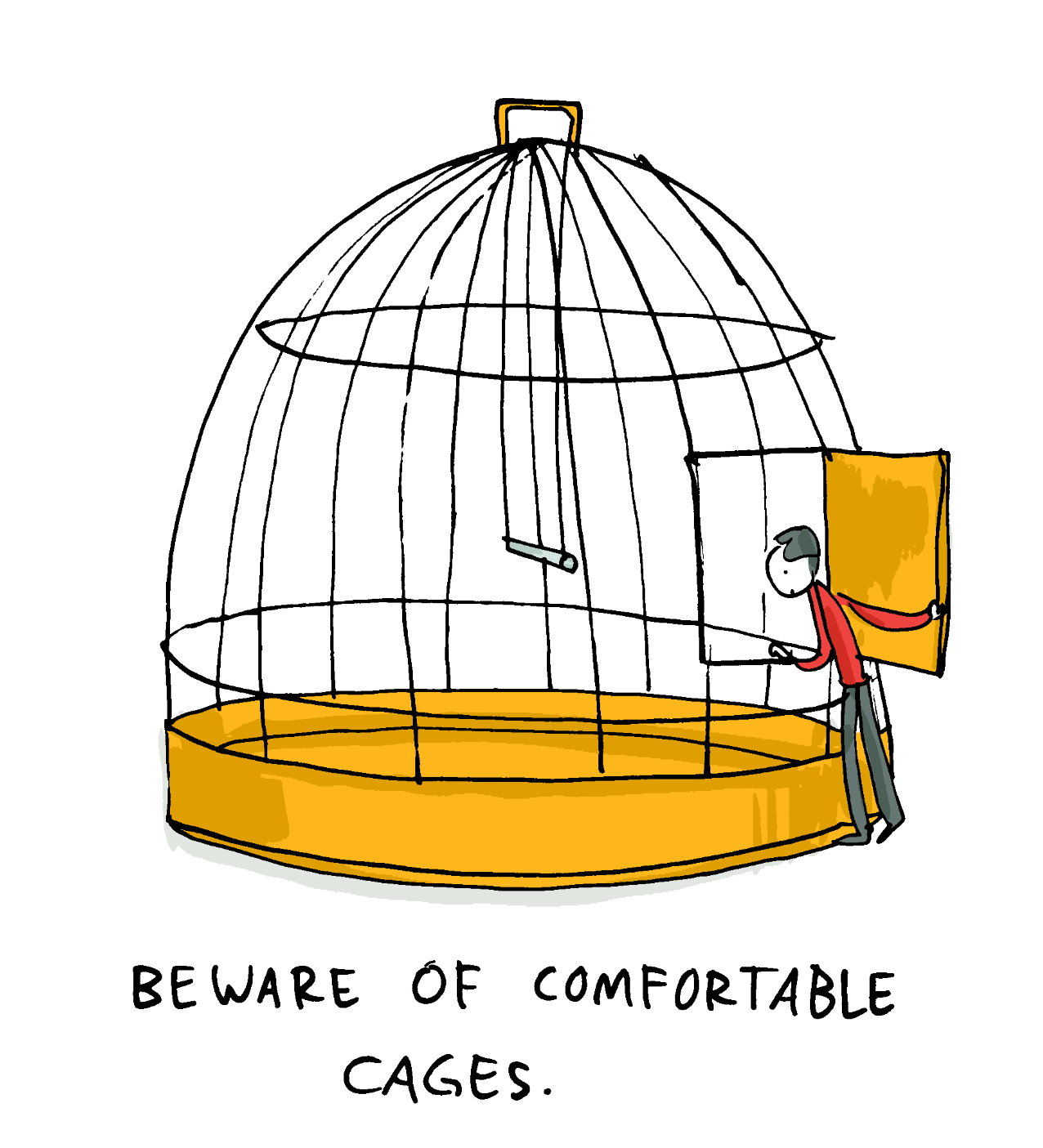Since I began drawing comics in 2009, I’ve had the self-imposed goal of creating one new piece per week. Some weeks this seems like the lowest possible bar. Other times it feels like a crushing expectation. I wonder—why am I expecting this of myself? Still, I persist. There’s no time for burnout: I need to draw another comic.
This goal is dependent on two things: a renewable source of ideas to fuel the work and a big enough chunk of time to put these ideas on paper.
The renewable source of ideas is my sketchbooks. When I neglect to doodle, draw from life, or make notes of daily observations, my ideas start to fade and my creative process feels stale. I need to read new books, explore the work of new artists, and find visual inspiration in new places.
My time is trickier to manage. I’m easily distracted. When I spend too many hours watching football, scrolling Instagram, or mindlessly staring at my inbox, it feels like I don’t have enough time to create a new comic strip or draft a new story idea.
Certain obligations I can’t neglect: my kids need to be dropped off at school every weekday, the dishes must be done somewhat regularly, my lawn needs to be mowed so the neighbors don’t start glaring at me. I need to get enough sleep or I get annoyed and impatient with my work (and life in general).
Ah, sleep. Since my morning creativity is fueled by coffee and my brain is prone to rumination, I often find myself lying awake at night, thinking. I think about everything and accomplish nothing. I urge my mind to fall asleep and end up more awake. It seems like everything I try to do has the opposite effect. I think, therefore I think, therefore I think, therefore I think…
This Law of Paradoxical Intention applies to my hours at the drawing table as well. Thinking about a creative problem is useful—up to a point. Past that point it’s unhelpful and exhausting. Unfortunately, it’s impossible to say precisely where the point of futility begins. The answer to this creative tire-spinning is simple: stop thinking. But how?
In good weather, I take a blanket to the backyard and relax under a tree. (After applying sunscreen, bug spray and a ridiculous floppy hat.) I close my eyes or stare up into the leafy branches. Sleep and ideas, so elusive when being pursued, often ensue. I keep my sketchbook nearby, just in case.
You might ask: Why not just start by relaxing under a tree? Why waste time and energy fidgeting at the drawing table? Why not skip straight to the moment of insight?
Unfortunately, some discomfort seems to be necessary for the creative process to work. Struggle + relaxation = insight. Relaxation + relaxation + relaxation = complacency.
Complacency is comfortable. It has a way of sneaking into my process, specifically if I use the same materials and methods too often. I have a time-tested way of working: drawing with Pitt artist pens on Strathmore tracing paper, shading in Prismacolor marker, scanning with my Epson scanner, and coloring in Adobe Photoshop. (If any of these companies want to sponsor Incidental Comics, I’ll be a tireless spokesperson!)
But this comfort can be a trap. Switching to new art medium is frustrating, especially since I have no formal art training. My watercolors spill and smear. My colored pencils need constant sharpening. Collage leaves my desk cluttered with infinite paper clippings and my hands sticky with glue. My reliable map of the creative process now fails me.
So I improvise. When I’m unable to fall back on old routines, new possibilities open up. I create something that doesn’t feel quite like me. Or maybe it unlocks a new me. It’s looser, messier me. One that’s accidental, experimental. Unafraid to be uncomfortable.
Most of what I know about improv comedy I learned from listening to interviews with author Mo Willems. Watching comedy in person makes me uncomfortable. And if I had to perform improv, the crowd would either throw vegetables at me or yawn in boredom. But the improv principle of saying “Yes, and…” to an idea, no matter how wild and ridiculous, is a great way to approach the creative process.
Instead of saying, “No, but I always work this way.” Say, “Yes, and I’ll try this new technique. How do you get to some place new? By ignoring familiar routes. By creating unexpected directions.
I’m trying to be less sure of where I’m going. I’m trying to worry less about how I get there. I’m excited to see where this new creative path will take me.
What’s helped you navigate your creative journey? Please share in the comments below. I’d love to hear what works for you.
For more creative wisdom, read Part I and Part II and check out my books of comics, published by Abrams ComicArts and available worldwide wherever books are sold.














This is fantastic - one of the best and most honest pieces on the creative process I've ever read, truly. Thank you.
I love your comics and this post spoke so much to me! I particularly liked the comic where you said to beware of comfortable cages. I need to embrace the idea of discomfort more. I am currently revising a novel that I refuse to look at...because it's uncomfortable. But, I WANT to work on it-it's a battle!